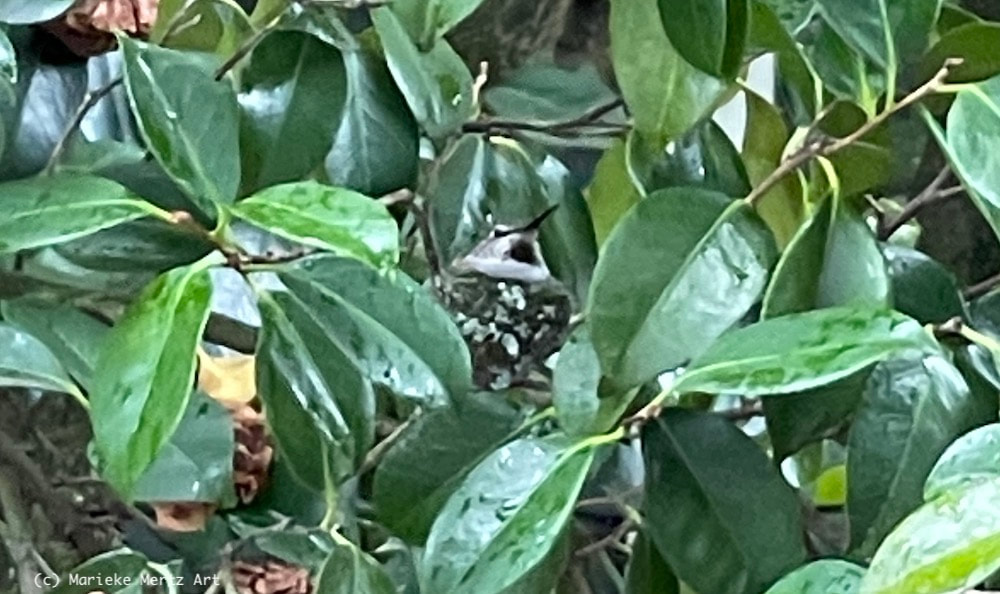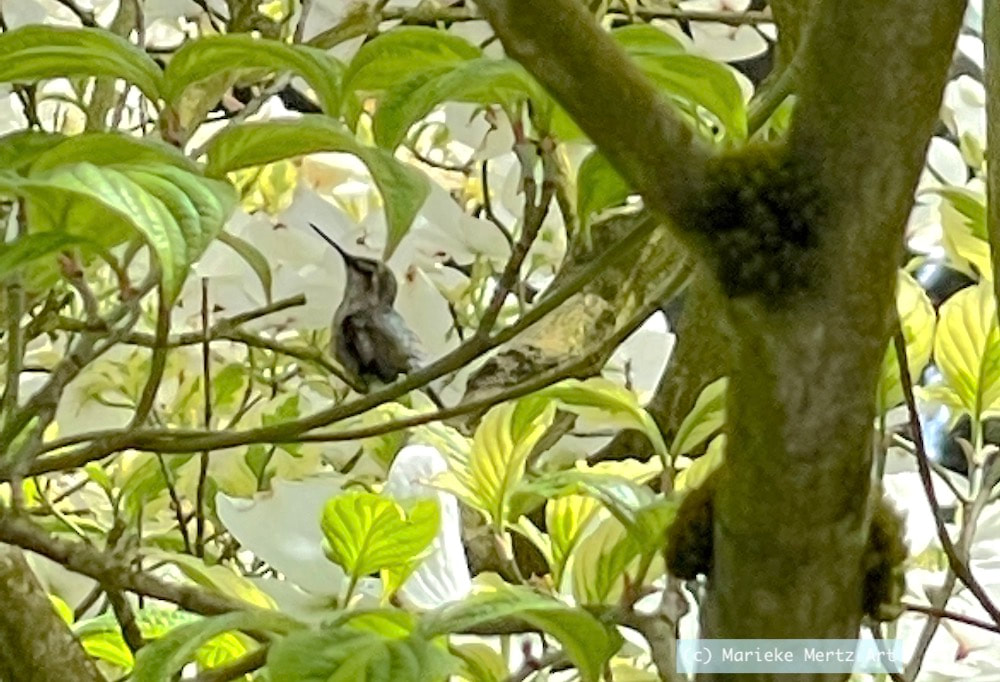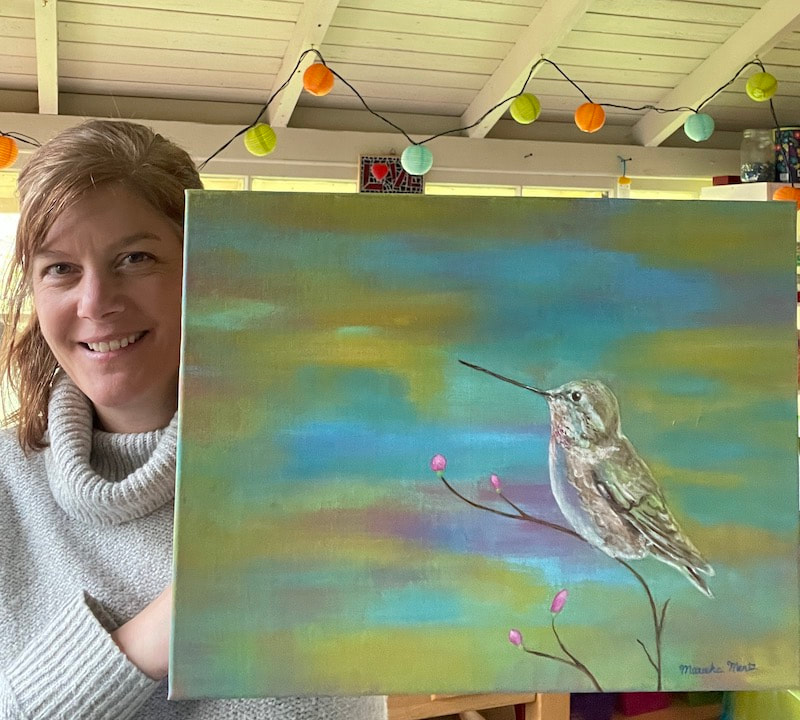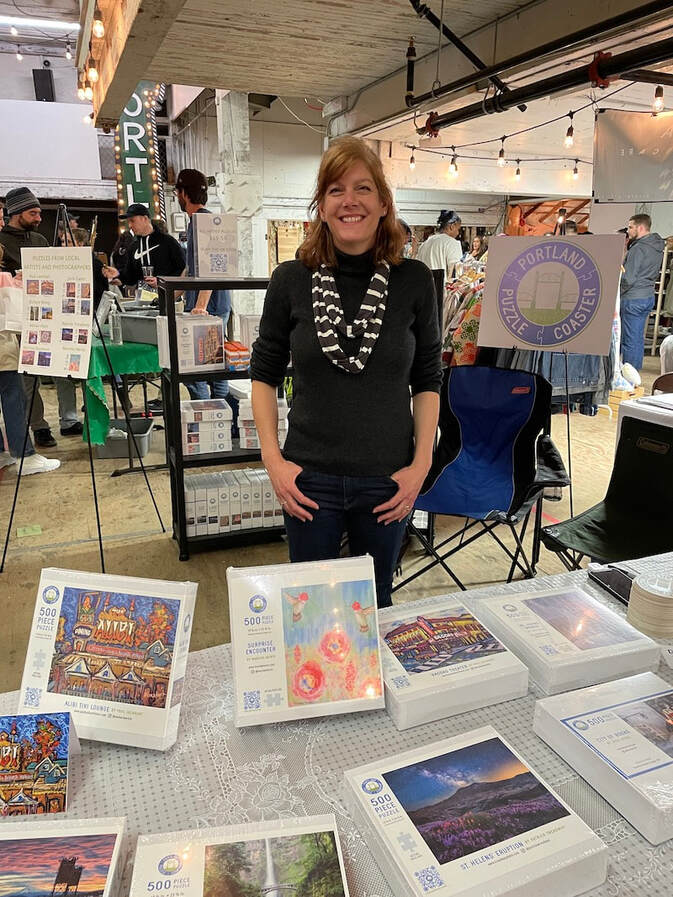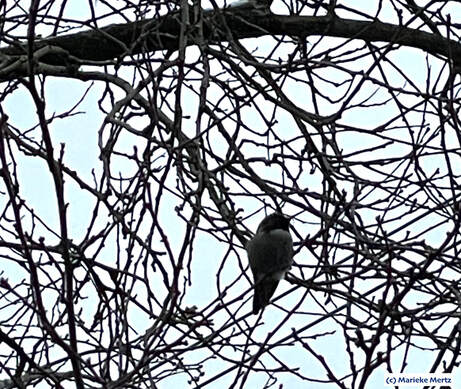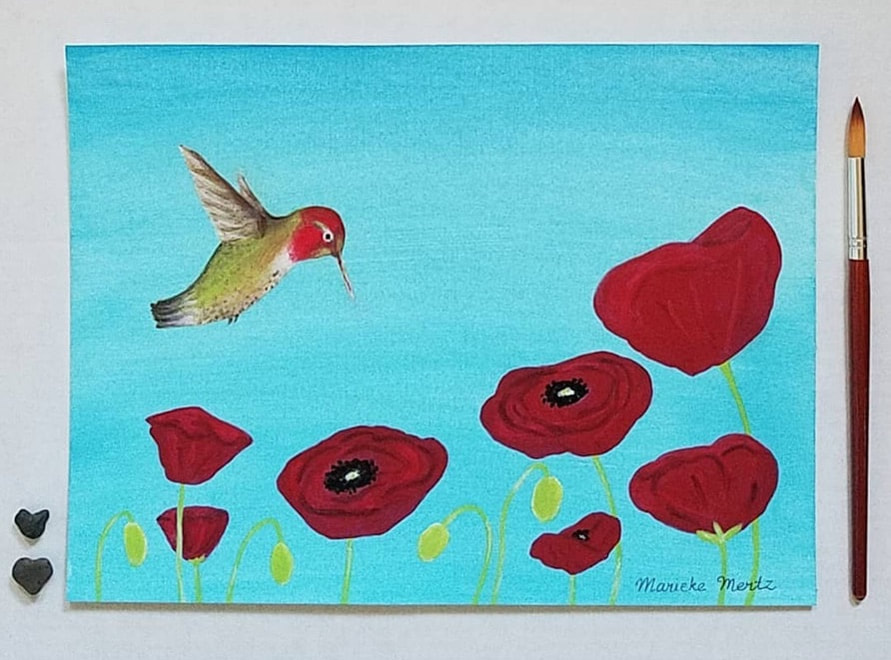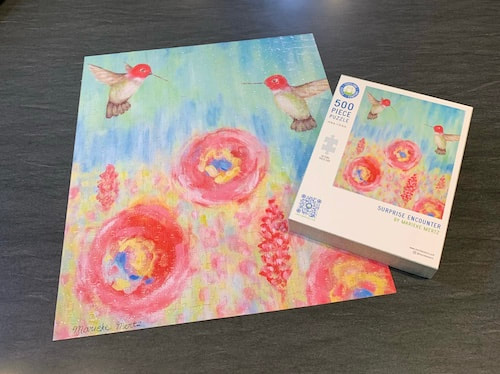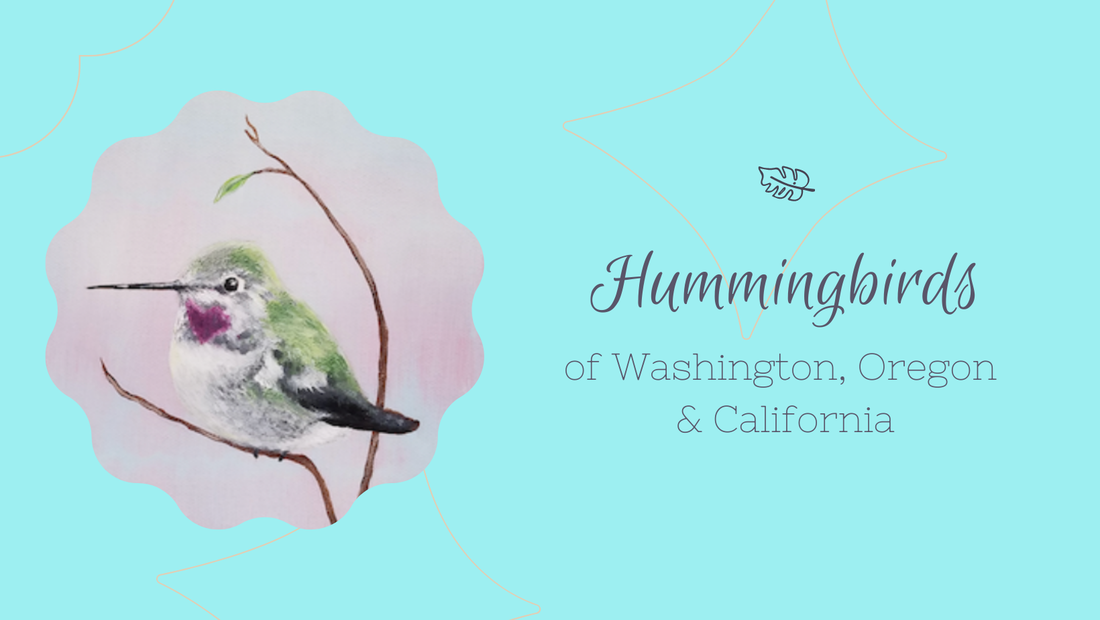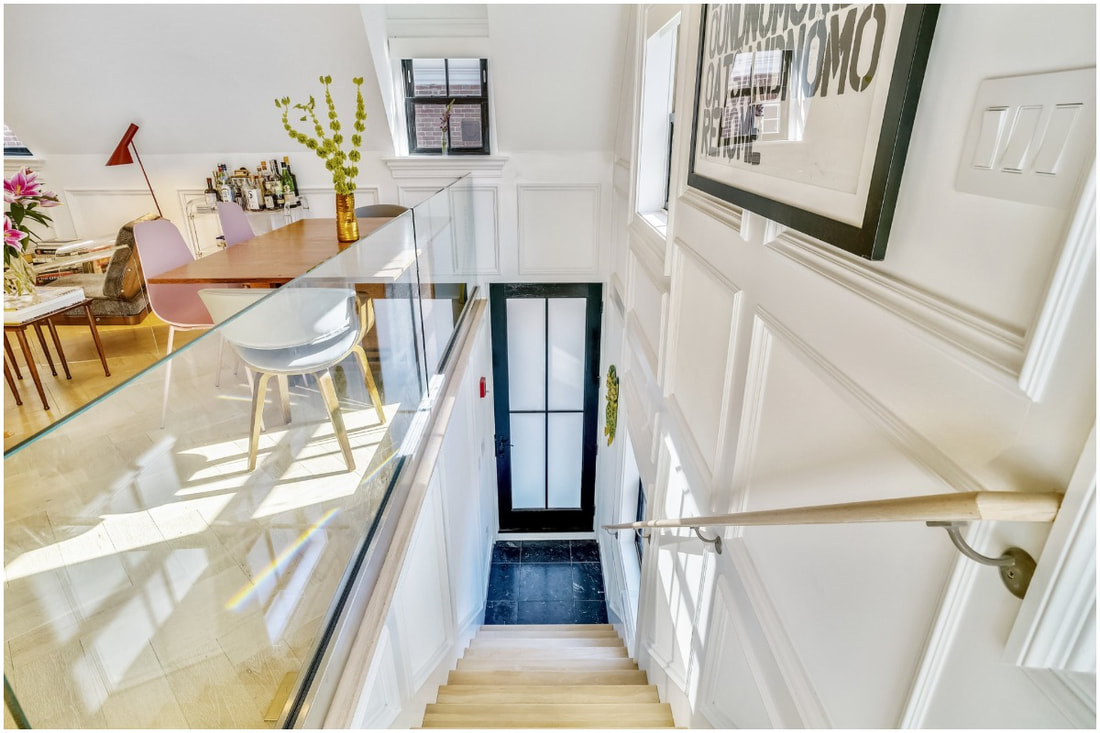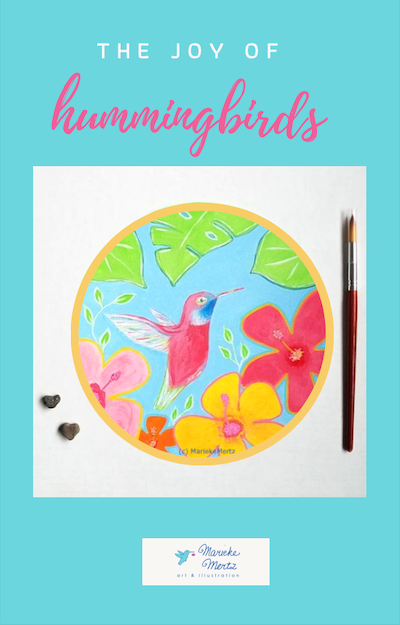|
Have you ever been in your garden and suddenly spotted a hummingbird zipping past? Did it instantly capture your attention? Did you marvel at the amazing speed and beauty of this bird?
I’ve certainly been there! As the weather warms up, we tend to spend more time outdoors. I think many of us would agree that it’s easy to lose track of time sitting in the garden on a warm spring day sipping your favorite beverage and enjoying the simple pleasure of watching hummingbirds dart from flower to flower. These tiny birds are truly magical, aren’t they?
You might be wondering if you can do anything to attract hummingbirds to your garden if you live in an area where these birds live year around or migrate through.
The answer is yes and you might find these tips helpful in attracting more hummingbirds to your garden, or even patio or balcony.
1. Plant native tubular shaped flowers
Hummingbirds have long beaks well suited for drinking nectar from tubular flowers. While they lack a well developed sense of smell, their eyesight makes up for it! Scientists have discovered that hummingbirds see a wider range of colors than we do. They’re especially attracted to red, pink, and orange but will feed on different colored flowers as well.
Planting native flowers is preferred to non-native varieties as they are best adapted to your local area and tend to thrive with less watering. Also try to choose flowering plants with different blooming seasons. Large clusters of flowers will help your garden stand out and be more easily noticed by the hummingbirds.
2. Offer perches
When a hummingbird is not feeding to satisfy its astounding metabolism, it rests by perching. Hummingbirds may not be able to walk or hop like some other birds, but they do spend a good deal of time perching. They might perch to oversee and protect a food source in your garden (they’re territorial!), or preen their feathers.
Perches with a clear, broad view to quickly spot both predators and competitors during the day time are most preferred. In our garden, I’ve seen hummingbirds sit on the very top of a thin branch overseeing the area. They also spend the night this way, often perched on a branch in a nearby tree, giving them cover from leaves and protection. So offering them a place to hang out in the form of a bush or tree that’s high enough from the ground to stay safe from predators would be much appreciated by your local hummingbirds.
3. Don't use pesticides
Besides feeding nectar from flowers, hummingbirds also eat insects. They are champs at catching tiny insects like mosquitoes and fruit flies out of air with acrobatic precision! Using pesticides is harmful for many reasons but this is something to be especially aware of, if you’re hoping to attract hummingbirds. On the flip side, hanging a small piece of overripe fruit near a feeder will attract fruit flies providing a welcome protein snack to your local hummingbirds.
4. Provide water for bathing
Hummingbirds need clean water to bathe but with such itty bitty bodies, many regular bird baths are just too big! They especially like small water fountains and misters so if you really want to make your garden a luxury spa for hummingbirds, consider adding one of these special features!
I hope you find these tips helpful in attracting hummingbirds to your garden. If you don’t have a garden, no worries! You can most definitely attract these amazing birds to your patio, deck or balcony with hanging pots as well.
If you enjoyed this blog post, please share it via the social media buttons so that others may more easily find this information.
What has been your experience attracting hummingbirds to your garden? Do you live in an area that is frequented by hummingbirds? Do you have any tips for attracting hummingbirds?
I’d love to hear from you in the comments!
Thank you!
0 Comments
While April was cold and gloomy in the Pacific Northwest with even an unexpected snow storm covering the tulips in Portland, it’s been an exciting start to spring in my art studio! I have a few updates I wanted to share with you:
I’ve been healing from a pinched nerve in my neck that has prevented me from painting but I have this idea for a new collection and can’t wait to get back behind the easel! Apparently, not being able to do much of anything was great for inspiration!
Thank you for taking a look at my art! 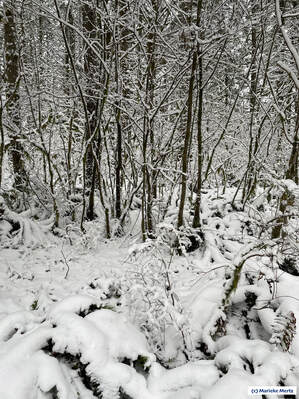
Watching hummingbirds and their charming acrobatics can add so much joy to our lives. But what if the weather turns very cold? How can we take care of hummingbirds in the coldest of seasons, in winter? Even though hummingbirds are wild birds, we connect with them as they visit our communities, neighborhoods and gardens where they feed on nectar from flowers and feeders. Caring for hummingbirds can easily turn into worries as we see the thermometer drop lower and lower…. as snowflakes start falling from the sky…
While it’s March now and we know spring’s around the corner, this question has popped up so many times in the hummingbird group I started on Facebook, that I thought I’d reach out to Ivan Phillipsen to provide you with his thoughts on taking care of hummingbirds in winter. Hopefully, we've had the worst of the cold weather but you just never know since last week was so very cold where I live!
Before I share his thoughts with you, I’ll tell you a bit more about him. Ivan is a passionate naturalist with a background in scientific research. He holds an M.S. in biology from Cal State San Bernardino and a Ph.D. in zoology from Oregon State University. He shares his knowledge of birds through his fun, enjoyable podcast “The Science of Birds.” He’s also the co-owner of a birding ecotour company called Wild Latitudes which allows you to travel to beautiful places while learning about the nature, animals and birds you encounter.
Now let's get to our question!
“I have hummingbirds that have been staying around my home all winter. Shouldn’t they be going south to warmer places?” “Anna's Hummingbird and perhaps a couple other North American hummingbird species have expanded their ranges northward in recent decades. This is probably due to multiple factors, including the availability of sugar water in backyard feeders. The northern populations of these hummingbirds occasionally experience very cold or freezing weather. Since they are relatively recent immigrants, they may not have had time to adapt physiologically to the cold via natural selection.” “So… how do I best care for these hummingbirds in winter?” “If you have some hummingbirds that live in your yard year-round, and you feed them in winter, it's best to keep feeding them every day through the cold months. The key is to be consistent. You don't want to randomly stop feeding these birds, who have probably come to depend on your feeders, to an extent. Cold weather is especially demanding. Hummingbirds have high metabolisms and cold weather requires that they burn even more calories than they do in milder weather. Even one cold day without food could be fatal to a hummer. In spring and summer, there are flowers available as alternative food sources. But in winter, northern hummers get most of their food from our feeders (and from a few exotic flowers that bloom at weird times).” “What else is important to know about feeding hummingbirds during the coldest time of year?” “Monitor your feeder to make sure the liquid solution doesn't freeze solid overnight. You can bring it in after sunset each night and put it back out before dawn. Some people, I've heard, set up heating systems outside to keep the liquid from freezing. You could also try insulating the container holding the liquid. As always, it's important to regularly clean your feeder. Replace the sugar water every 2-3 days and clean the feeder at the same time.“ Thank you so much for your thoughts, Ivan! If you’re interested in birds, you can find more information about Ivan’s podcast “The Science of Birds” on this website or look it up wherever you enjoy listening to your podcasts. Information about his upcoming nature tours and joining his travel groups to learn more about nature can be found on this website for his birding ecotour company Wild Latitudes. Have you been taking care of the hummingbirds around your home in winter? If so, what region do you live? Would love to hear from you in the comments!
If you love hummingbirds and enjoyed this post, I’d really appreciate if you share it via the social media buttons below. Sharing would help more people find this information about taking care of hummingbirds in winter.
Thank you very much!
It’s taken many small steps but I’m now a certified Oregon Master Naturalist! Does that mean I’m an expert on all things nature? Nope, not exactly! But I’ve certainly learned a lot on this journey!
Today, I want to share my story with you to encourage you to take small steps towards your goals and dreams.
I started the Oregon Master Naturalist course, which is taught by the Oregon State University extension program, back in the fall of 2019. During the middle of the program, I learned my dad was really not doing well so I flew home to care for him during his last days of life. I was so grateful that the course was taught online so I could continue learning late at night while supporting my family in the Netherlands. 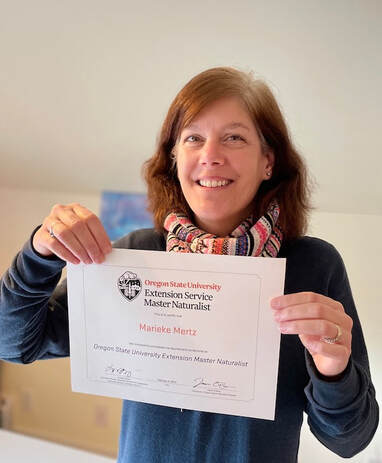
The second portion of the Oregon Master Naturalist course is field study but due to the pandemic, this course was first postponed and then changed to a hybrid class with online classes and field study on our own. I was happy I could continue the program even with the extra challenges along the way!
The third part is completing a minimum of 40 hours of community service. Again, due to covid, this proved to be a challenge! Many nature focused organizations were taking a hiatus from working with new volunteers. Since you know I love hummingbirds, I looked for a program dedicated to their conservation and well-being. I found out that it’s probably easier to find these programs if you live in a tropical climate than if you live in the Pacific Northwest!
After placing a bunch of calls, I somehow got connected with a wonderful outdoor educator who works for the Columbia Slough Watershed Council. I spent a few of my community volunteer hours working with our local youth through this organization. I discovered a park I didn’t know before and paddled the Columbia Slough (for the first time!) with a bunch of teenagers on a beautiful, sunny day. Loved it! But we were heading into fall/winter which basically meant a break in outdoor education programming.
Through a good friend, I got connected with Portland Audubon. I’ve become more and more enamored with birds so this seemed to be a perfect fit! I was invited to be a member on the community outreach planning team and completed the remaining hours of my community service through work for this awesome organization.
We’ve been putting together community outreach kits that share about the awesome adaptations and traits of specific bird species. If you’re local to Portland and surrounding area, we’ve got some fun activities coming your way! 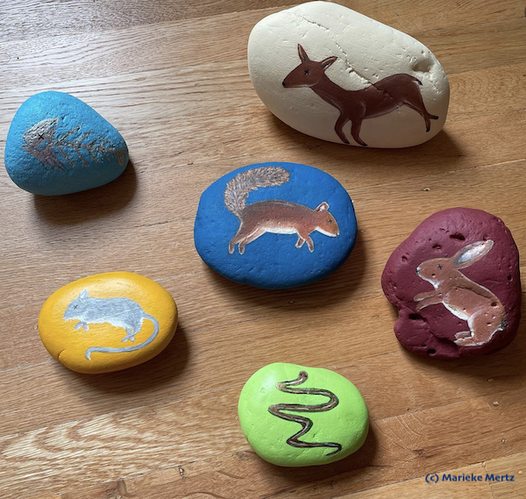
My favorite task so far has been painting rocks with the diet of a turkey vulture. Since turkey vultures eat dead animals, I painted the rocks in a way that wouldn't scare the littlest kids in our audience. It was a good challenge as it was not just a creative project but also needed to be an effective educational tool to share with the community about the important “clean up” work this bird does and how crucial it is that we pick up trash so it doesn’t accidentally end up in a turkey vulture’s stomach! For those of you that hunt or fish, please consider using supplies that don’t contain lead. After working on the research and materials for the turkey vulture outreach kit, I tell you, I have a whole new appreciation for this bird! For a minute, just imagine what your next hike would be like if turkey vultures didn't do the important clean up work they do! Yikes!
I’m having so much fun volunteering for Portland Audubon that I plan to continue this work this year even though I’ve already met the required number of volunteer hours.
So what does it mean that I’m an Oregon Master Naturalist? It means that I’ve built a foundation of knowledge based on science about our beautiful state. I now plan to continue learning about different aspects of nature and find ways to share the joy I find in nature with others.
While I love getting involved in all sorts of aspects of outdoor education, community science and program support, I still think my most effective and authentic way to communicate my love for nature is through my art. Sometimes art speaks louder than words, right?
I share this story with you in the hopes that my experiences encourage you to go for your dreams and reach your goals! The journey can be a bit of a winding road with obstacles along the way but just keep plugging away at it with small steps and you’ll get there!
So, I’m curious…. What goals and dreams are you working towards right now? Or would you like to work towards??
I look forward to hearing from you in the comments. Also, if you enjoyed reading this post, please share it via the social media buttons at the bottom of this post.
Thank you for following my journey!
Zip! Zoom! When we think of hummingbirds, we often think of how fast they can fly! As you can imagine, flying fast takes a lot of energy!
So when one of the members of the hummingbird group I recently started on Facebook asked “do hummingbirds sleep?” I thought it was an excellent question. I mean, I’m certainly tired and ready for sleep at night after a busy day!
Well, the answer to this question is: yes! Yes, they do sleep. In fact, they have a special sleep called torpor. Although torpor is not the same as our sleep which uses much more energy and has many restorative functions. During torpor, the hummingbird’s body temperature lowers, their breathing rate slows down considerably, their heart rate drops and so does their metabolic rate. These things can be very helpful to the hummingbird during certain times but torpor also puts the hummingbird at risk of predation.
Because it can take up to an hour to awaken from torpor, this state is not meant for power naps during the day! Hummingbirds sleep from dusk until dawn, waking up from torpor an hour or so before dawn. They’re diurnal which means they’re active during the day. However, hummingbirds may go into torpor during cold spells even during the day. With their small body size and lack of insulating downy feathers, torpor helps them survive the cold by lowering their body temperature.
Due to their insanely high metabolism, hummingbirds have a ferocious appetite and need to keep eating all day long in order to stay alive. So basically, by slowing down their metabolic rate, they can make it through the night!
Ever wondered where hummingbirds sleep at night? They don’t really use bird houses but instead often choose a twig or a branch in a tree near a food source. They sleep alone, not with other hummingbirds. One exception is when a mama bird is taking care of her chicks on her nest.
I hope you enjoyed reading about hummingbirds in this blog post. They’re such amazing birds!
As I mentioned, I recently started a new Facebook group all about hummingbirds, specifically for people living in Washington State, Oregon or California. If you live in these West Coast states, please consider joining our group by clicking here.
Also, if you’re curious about anything else related to hummingbirds, please let me know. You can either leave me your question in the comments or reach out to me via email at [email protected]. If you liked this blog post, sharing on social media would help others to find it!
Thank you for following my journey!
Paying good attention to the shapes of each piece… finding the edge pieces first…. biting my lip in concentration when a particular piece was so hard to find but then, the feeling of excitement when you finally find the missing piece!
These are my memories from when I was little working on a jigsaw puzzle on the floor of my bedroom, sitting criss cross applesauce. :) When I was little growing up in the Netherlands, I worked on and completed so many puzzles! It was the perfect thing to do in a place where it rains a lot! Even when your friends couldn’t come over to play, you could always work on your puzzle!
As a mom, I loved working on puzzles with my kids when they were little. Not only were they fun to complete, I felt jigsaw puzzles had a ton of educational value. It was as if I could see their brains working solving a puzzle! Besides being so good for our brains, puzzles are just so fun! For me, they bring back a feeling we call “gezellig” in Dutch. There’s not really a direct translation but it kind of means something like “cozy” in English. You can gather with friends or family around the table and work on a puzzle together while sipping hot drinks and chatting. Not much more is needed, right? It’s a SIMPLE JOY! 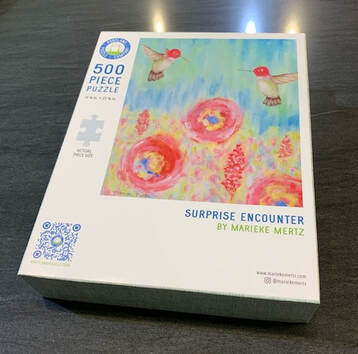
Anyways, considering how much I love puzzles, you can imagine how thrilled I am to share some exciting news with you!
My BIG news is that my hummingbird art is now available on puzzles! I’m collaborating with an awesome local company called Portland Puzzle. They are a family run company that prides itself on making high quality, made-in-the-usa jigsaw puzzles. I personally visited their work space and was so impressed with the care they take in making their puzzles. It honestly felt like an artisan process! So excited to be working with this local company and seeing my art of two Anna's hummingbirds on their fun puzzles!
You can order the "Surprise Encounter" hummingbird puzzles directly through their website and if you live in Portland Oregon, they're now also available at my favorite birding store Backyard Bird Shop as well as at the Arrangement on NE Fremont!
Do you enjoy jigsaw puzzles? Have special memories around completing puzzles like I do? Would love to hear in the comments! Thanks for following my journey! Marieke
I’ve always loved hummingbirds but have become more fascinated with them in recent years. Painting hummingbirds made me more interested to learn more about them. The more I learn, the more I realize how amazing these small birds are!
So I did something this past month…. I decided to start a Facebook group to create a community for people who love hummingbirds, just like me. I made the group specifically for people living in Washington, Oregon or California. Why these states? Well, there’s some really good groups all about hummingbirds on Facebook already but I found out there wasn’t one specifically for the West Coast. I live in the Pacific Northwest and thought it’d be fun to learn more about the hummingbirds living in this area. With California having a greater diversity and population of hummingbirds, I chose to make the group for people living in the West Coast states.
The group is brand new but my hope for this community is that:
- we can learn about hummingbirds together - we can share what gives us joy about hummingbirds - we can participate with stories, experiences and photos in a welcoming environment
So if you live in Washington, Oregon or California and love hummingbirds, please join our group!
You can find the group here: http://www.facebook.com/groups/1024381601467928/ I look forward to connecting with you! If you know of a family member or friend who might enjoy this group, will you please help me get the word out by sharing? Thank you!
Even if you love home decorating, some areas in your home might be more challenging to decorate than others. You might have a low, slanted ceiling in one area of your home, or a small nook that makes decorating tricky. Another area that can be challenging is the stairway of your home.
For many homes, the stairway is right as you enter the home near the front door. In these homes, this area might be the first thing your guests see… of course you’d want to make this area beautiful and welcoming!
But even if your stairway is not by the front door, this area typically gives you plenty of wall space to have fun decorating. If you have a corridor style of stairway and love flowers, why not decorate the walls with floral art so it feels you’re walking through a garden? Or if you’re a tree hugger at heart, with paintings of pines and leaves? Well, you know I’m all about bringing the joy of hummingbirds indoors with my original art and art prints!
Truly, there are so many ways to make your stairway inviting and beautiful!
Whether you’re decorating this area in a new home or would like to give the stairway in your current home a refresh, this article from Redfin might give you some helpful tips and ideas: Redfin Home Stairway Design Tips
I was excited when Redfin approached me for my thoughts on this topic. Besides my tip, there are lots of ideas in this article from fellow artists, photographers and home remodelers.
I feel I can always use some inspiration when it comes to home decorating so I found the article helpful and I hope you do too!
What type of stairway do you have in your home? How have you decorated this area? With art or photographs? Does your stairway decor have a theme? Would love to hear!
Thank you for following my journey! 
So you have a few minutes and feel like doing something fun. What do you do?
Scroll through your Instagram feed? Eat a snack? Look out the window to see if there’s a hummingbird at your feeder… (or is that just me?!) Well, I have another FUN ACTIVITY for you that helps you escape from the work sitting on your desk for just a few minutes. I found out about it while I was paging through a Flow magazine in Dutch that my mom gifted me while I was in the Netherlands. I’m not sure if you’re familiar with Flow magazine but it’s one of my favorite magazines. It’s chockfull of illustrations, articles about slow, meaningful living and lots of inspiration (and encouragement!) for a creative life. And in case you’re wondering, yes! It’s published in English too. :)
So as I was reading my magazine, my eyes fell on a small blurb about a creative quiz. I don’t know what it is about doing quizzes but they’re fun! I guess they help us learn a bit more about ourselves which is fun and helpful!
I remember as a teenager circling answers to quizzes in my teen magazines. You’d count up how many A’s, B’s, C’s or D’s you circled and then read the results of your quiz. With online quizzes you don’t even have to count up your answers anymore!
This online quiz is all about finding out what type of creative person you are. It was created by Adobe Create and leads you through a few questions interspersed with some original animations. At the end of it, the results pop up on the screen. I didn’t have to give my email address or personal information to see the results.
I don’t do too many of these online quizzes but as an artist, this one got my attention because it was about creativity.
Creativity can be expressed through so many different activities and pursuits so whether you’re into music, photography, writing, drawing, crafting or painting, I think you’ll enjoy taking this quiz.
In case you’re curious, my creative type is the Dreamer. Seeing that my art celebrates the simple joys, these words especially resonated with me: “… you naturally infuse your everyday life with the beauty and wonder of the imagination.” I can’t help but notice small objects of beauty in everyday life, often in nature, that reveal the magic of simply being alive.
Sharing these observations and reflections with you through my art is my greatest joy!
So… ready to find out what your creative type is? You can find the quiz here but please don’t forget to come back to share your results with me!
I look forward to hearing from you in the comments. And if you enjoyed this post, please share via social media. Thank you for following my journey!
This is the last week of school for our kids and temps were so high the week before last that we even had the chance to swim in a mountain lake. Somehow it’s almost summer break and yes…. even though it was hot and sunny, the water was still very cold! Are you wearing flip flops yet?
I’ve been continuing to work on my hummingbird painting collection. Painting so many hummingbirds led me to read more about them. Whenever I’m excited about something, I want to share it so I thought it might be fun to create a little e-book all about hummingbirds.
I named this hummingbird e-book “The Joy of Hummingbirds” as watching these amazing birds gives so much joy, doesn’t it? I thought some of you who also feel this way, might enjoy reading a bit more about this tiny, beautiful bird. The hummingbird e-book also includes a homemade recipe for hummingbird food to add to your hummingbird feeder. Making your own hummingbird food is easy but knowing about a few significant things is important.
Since the feedback on my Simple Joys e-book & journal has been so positive, I’ve added “The Joy of Hummingbirds” as a bonus for any new email subscribers. So when signing up, you’ll receive both!
I hope you like “The Joy of Hummingbirds.” If so, I’d love to hear in the comments!
Do you have any hummingbirds in the area where you live? Which is your favorite species of hummingbird? What would you like to know about hummingbirds? Do you have any hummingbird feeders in your garden? Please share!
Have a great start to your summer! Enjoy the journey!
Marieke |

